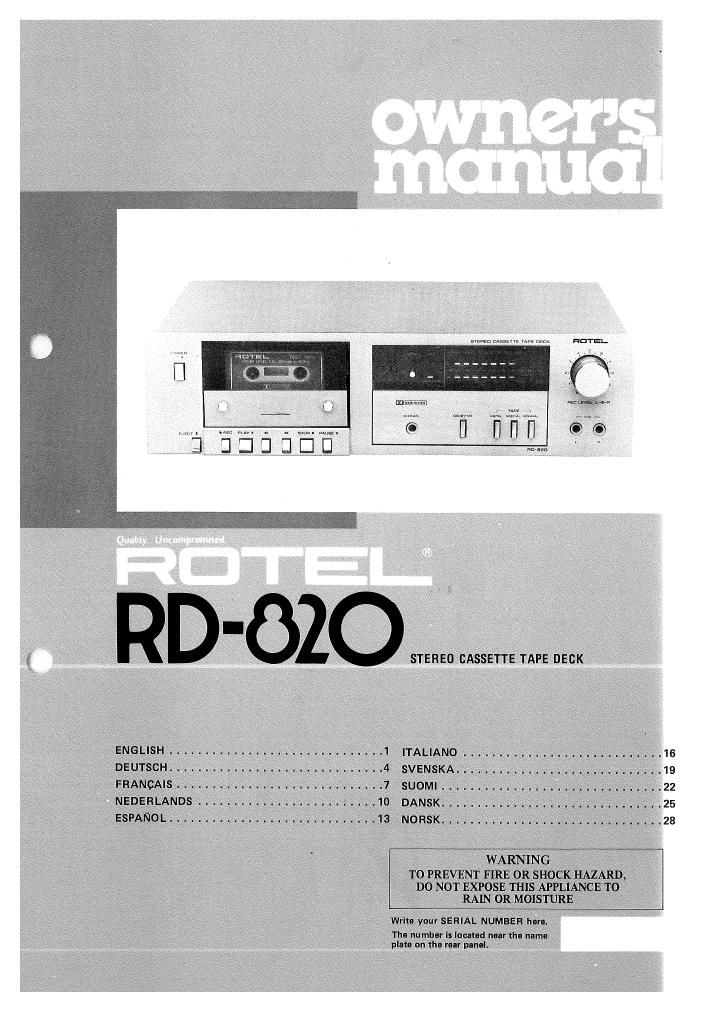Rotel RD 820 OM
This is the 18 pages manual for Rotel RD 820 OM.
Read or download the pdf for free. If you want to contribute, please upload pdfs to audioservicemanuals.wetransfer.com.
Page: 1 / 18

This is the 18 pages manual for Rotel RD 820 OM.
Read or download the pdf for free. If you want to contribute, please upload pdfs to audioservicemanuals.wetransfer.com.
